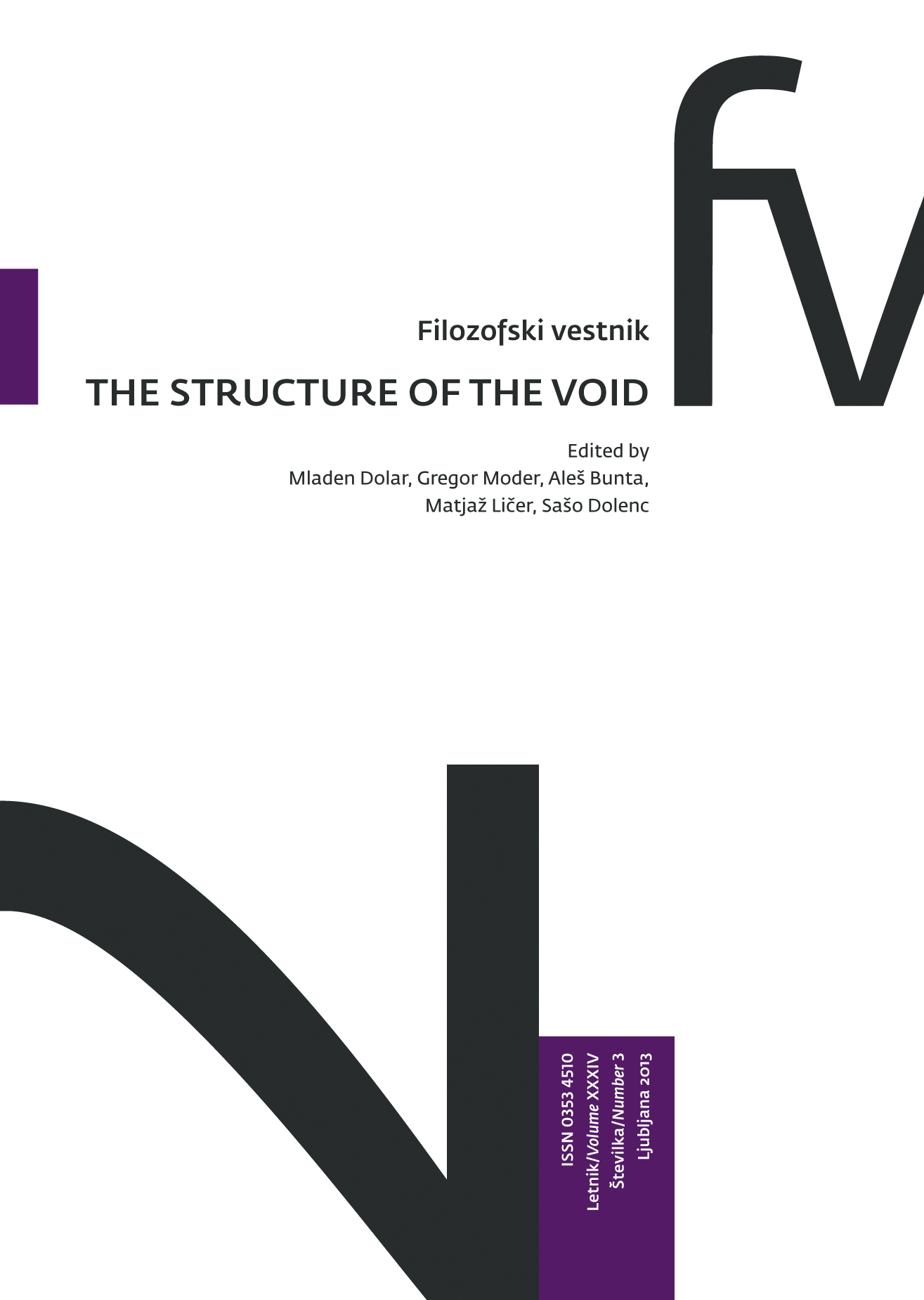Himself Nothing Beholds Nothing. On Schelling’s Ontological Isomorphism
Povzetek
In Schelling’s Weltalter, there are (at least) two different concepts of nothing: A nothing that is there (and is called being), and a nothing that is not there, but nonetheless exerts its effects. In this article, I propose a reading of Weltalter that circles in on these two different conceptions by moving from a Schellingian critique of Kant to a discussion of the implications of Schelling’s alternative. Kant identified the ultimately contradictory nature of reason, but he shied away from drawing the full consequences from this. Instead, contradiction must be embraced, according to Schelling, and by doing this, one is forced to think the concepts of ground and nothingness in much more realist terms than Kant did: Reason, like everything else, carries its own ground within it. Weltalter should therefore not, as is often believed, be read as an anthropomorphism, but much rather as what I call ontological isomorphism. Wallace Stevens’s poem “The Snow Man” is invoked to illustrate this position and to link it to the two issuing conceptions of nothing.Prenosi
Podatki o prenosih še niso na voljo.
Prenosi
Objavljeno
2013-12-28
Kako citirati
Bjerre, H. J. (2013). Himself Nothing Beholds Nothing. On Schelling’s Ontological Isomorphism. Filozofski Vestnik, 34(2). Pridobljeno od https://ojs.zrc-sazu.si/filozofski-vestnik/article/view/3258
Številka
Rubrike
The Structure of the Void
Licenca
Avtorji jamčijo, da je delo njihova avtorska stvaritev, da v njem niso kršene avtorske pravice tretjih oseb ali kake druge pravice. V primeru zahtevkov tretjih oseb se avtorji zavezujejo, da bodo varovali interese založnika ter da bodo povrnili morebitno škodo.
Podrobneje v rubriki: Prispevki





